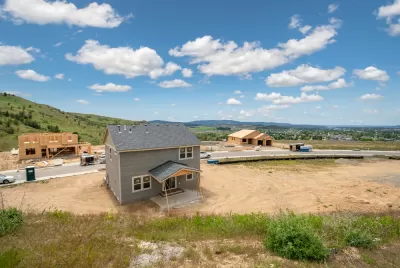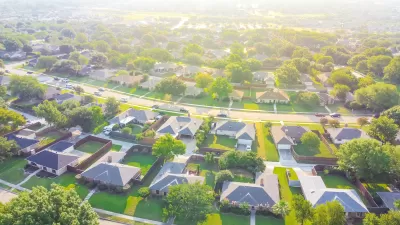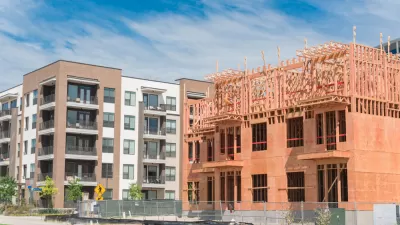Minimum square footage requirements are preventing many property owners from building on their lots, despite no evidence that they bring any safety benefits or maintain high property values.

Using examples from Utah, Alabama, and Georgia, Andrew Wimer, writing in Forbes, describes how minimum home size requirements are preventing many property owners from building their homes. “Minimum square footage requirements are a relatively new innovation and have nothing to do with health and safety. In fact, as recently as the mid-1980s the median square footage for American homes was 1,600 square feet.”
However, “Those requirements have grown even as building a home becomes more expensive. According to the U.S. Census Bureau, construction costs shot up 17.5% from 2020 to 2021, the largest spike in 50 years.” For people like Chrissy Rochford, who has plans to build a 1,600 square foot home, her town’s 2,000 square foot minimum requirement price her out of construction. “In Calhoun, Georgia, nonprofit Tiny House Hand Up’s plans for an affordable tiny home village are on hold since the town has an 1,150 square foot minimum. The plans meet the building requirements in every other way, but the town refuses to consider reducing the minimum.”
Some activists have sued to challenge the laws. “Laws restricting how Americans use their private property have to be reasonable and serve legitimate government interests. Courts have struck down square footage minimums in Connecticut and Pennsylvania, finding that they had no connection to public safety or welfare.”
FULL STORY: Rules Requiring People To Buy Big Homes Are Pricing Americans Out Of The Housing Market

Planetizen Federal Action Tracker
A weekly monitor of how Trump’s orders and actions are impacting planners and planning in America.

San Francisco's School District Spent $105M To Build Affordable Housing for Teachers — And That's Just the Beginning
SFUSD joins a growing list of school districts using their land holdings to address housing affordability challenges faced by their own employees.

The Tiny, Adorable $7,000 Car Turning Japan Onto EVs
The single seat Mibot charges from a regular plug as quickly as an iPad, and is about half the price of an average EV.

Seattle's Plan for Adopting Driverless Cars
Equity, safety, accessibility and affordability are front of mind as the city prepares for robotaxis and other autonomous vehicles.

As Trump Phases Out FEMA, Is It Time to Flee the Floodplains?
With less federal funding available for disaster relief efforts, the need to relocate at-risk communities is more urgent than ever.

With Protected Lanes, 460% More People Commute by Bike
For those needing more ammo, more data proving what we already knew is here.
Urban Design for Planners 1: Software Tools
This six-course series explores essential urban design concepts using open source software and equips planners with the tools they need to participate fully in the urban design process.
Planning for Universal Design
Learn the tools for implementing Universal Design in planning regulations.
Smith Gee Studio
City of Charlotte
City of Camden Redevelopment Agency
City of Astoria
Transportation Research & Education Center (TREC) at Portland State University
US High Speed Rail Association
City of Camden Redevelopment Agency
Municipality of Princeton (NJ)





























